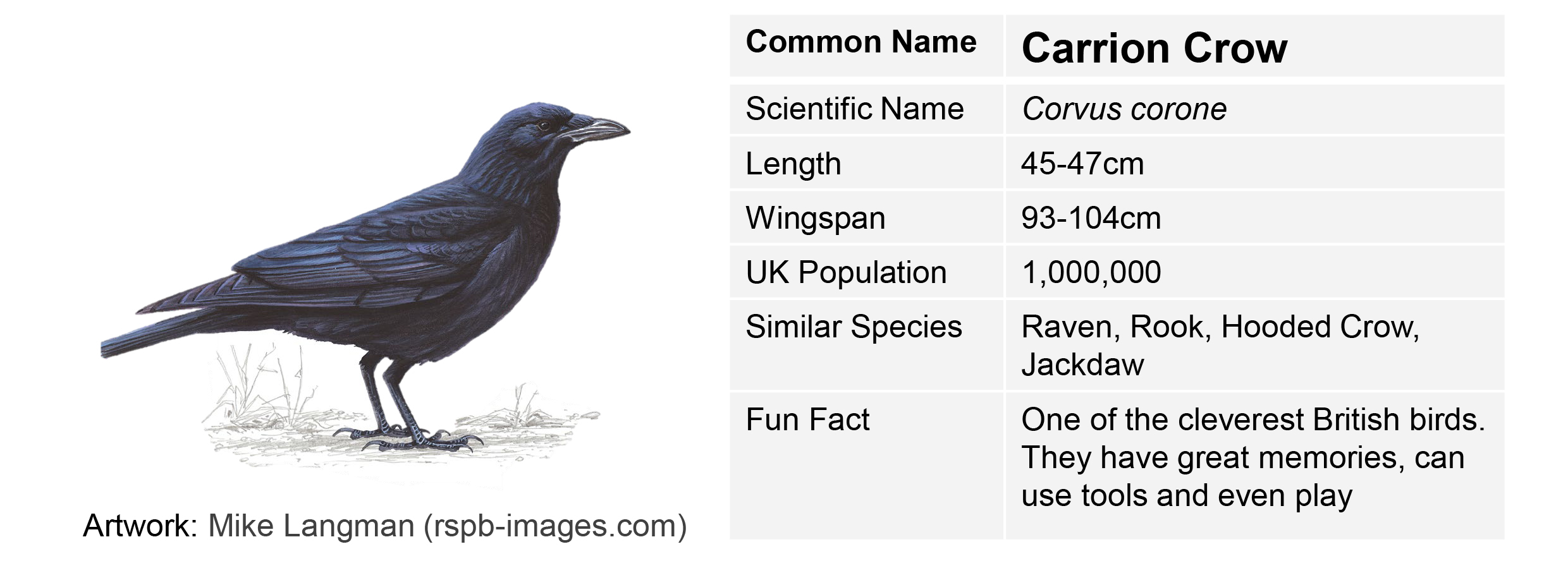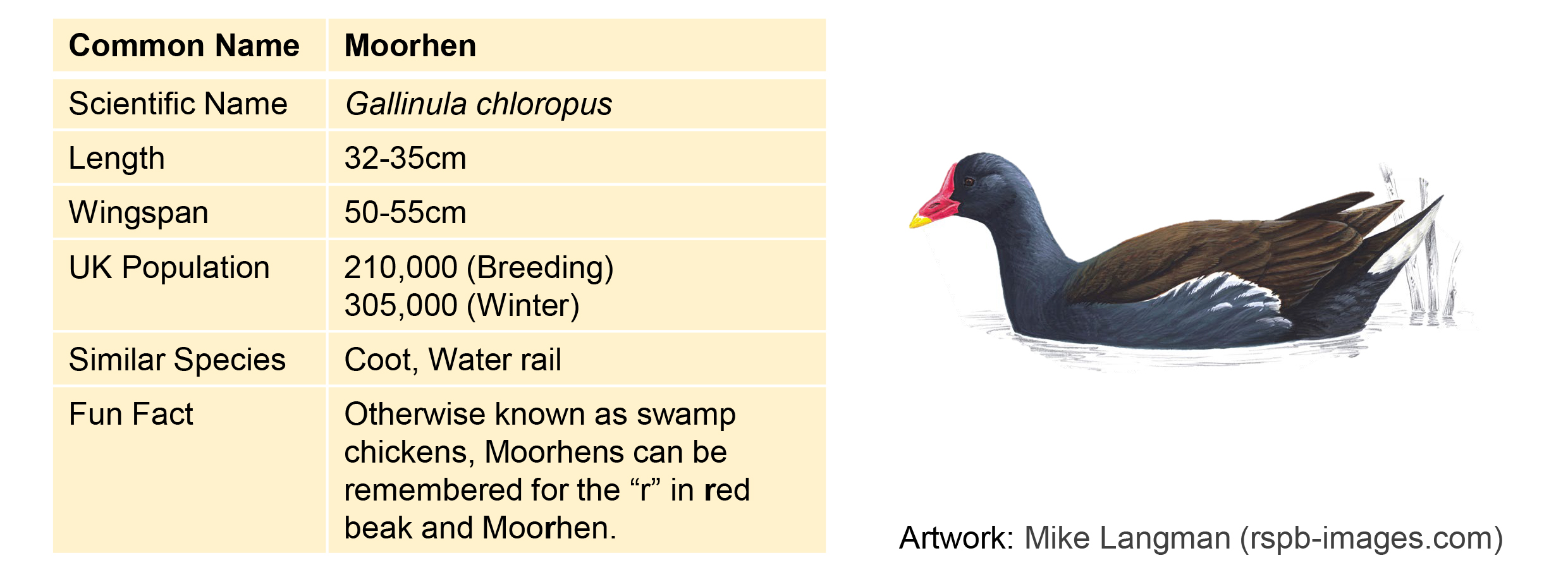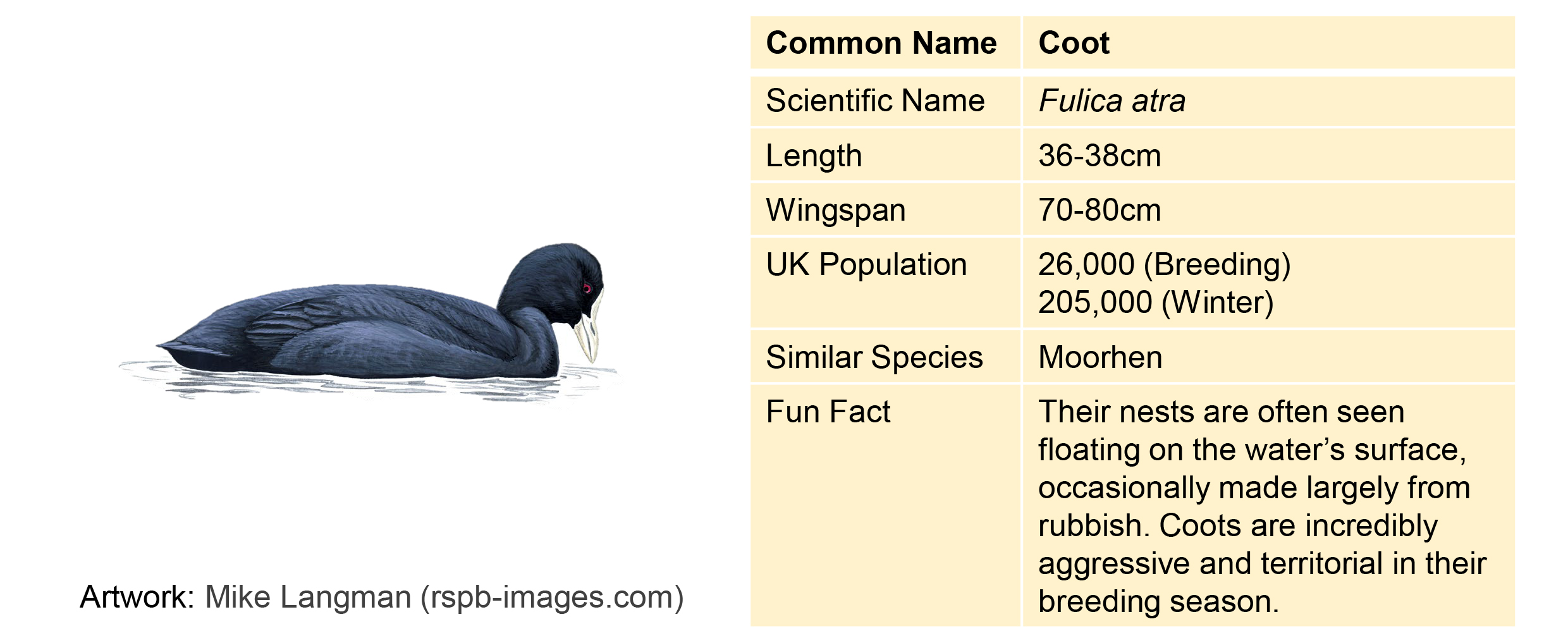Instruction video for birdwatching activity
The Science
Studying wildlife is one of the oldest forms of scientific research. Documenting and describing what we see around us is among the most primal human hobbies. These observations have helped us to understand how and why species evolved certain features, explore population fluctuations, design conservation procedures and ultimately better protect and preserve biodiversity. Spending time observing wildlife has been shown to reduce stress and alleviate feelings of anxiety – so it’s good for you too!
Safety instructions
This activity takes place near outdoor water and must be carried out under the supervision of an adult.
Time
As long as you like! (15 minutes +)
Materials
- Notebook and pen to mark observation
- Smartphone/tablet or paper print outs to identify birds that you see
Instructions
Getting Ready
Ensure your print outs are ready and/or bird guides have been downloaded. Watch instruction video for additional detail on the below instructions.
Let's Go Birdwatching!
- Get to your local park. We designed this guide around waterbirds so if you have somewhere local with a large pond or lake that would be best.
- Set up somewhere comfortable.
- Look and listen to what’s around you.
- When you spot something, have a look through the guide print outs and see if you can work out what it is.
- If you can: write down how many you see, think about what they’re doing and write down any observations.
- If you can’t: have a look in a bird handbook or check https://www.rspb.org.uk/birds-and-wildlife/wildlife-guides/identify-a-bird/ and fill in the new species in your notebook/bird guide.
- Take your time and enjoy!
Common Park Birds Guide
- On Land and In Trees
- In and around the water
- In water and on banks
- Form and Function
- 050 My Bird Guide













Here is an example of what information you can discover and record about the birds you see.

Tips and extras
Bird looks similar but not the same as your guide? – sometimes male and female birds of the same species look different. This is known as “sexual dimorphism”. Sometimes it’s subtle, such as tufted ducks where the female is greyer and has a much shorter tuft, and other times it’s more extreme such as mallards. Check a handbook or the internet if you want to find out more. Another thing to consider is whether the bird you’re looking at could be young. Young birds tend to be fluffier and greyer than their parents, sometimes they look completely different. You will mostly notice young birds and chicks in summer – so look out for who they seem to be following.
Listen Out – one of the best ways to tell birds apart is through their calls. Pigeons “coo”, ducks “quack”, and crows “caw” but listen out for what else you can hear and see if you can pick apart any more subtle differences.
Take and draw pictures – it’s a great way to notice specifics and quirks of the birds you are observing, and you’ll have a nice souvenir of your day as well.
Things to think about
It is easy to take the wildlife we see for granted but as parks and natural habitats get lost and destroyed the area for this wildlife becomes restricted. Many species of bird in the UK have shrinking populations and are increasing in risk of extinction. However, due to the work of many scientists and campaigners many important species such as Red Kites, which have been reintroduced after going extinct are on the increase!
Can you think of ways we can protect birds and other wildlife? Are there things that you can do?
Want to go further?
Take part in the annual RSPB Big Garden Birdwatch (26-28th January 2024)
Why take part?
“The birds we see in our gardens, from our balconies and in our parks, are a lively, colourful and endlessly fascinating part of all our lives, offering a real connection to the natural world. By taking part in the Birdwatch you, and hundreds of thousands like you, play an important role in helping us understand how UK birds are doing.” – Beccy Speight (RSPB Chief Executive)
The big garden birdwatch was launched in 1979 and RSPB supporters (like you!) have spent 11 million hours counting 172 million birds and helped the RSPB track UK bird species populations.
How to Take Part
The Big Garden Birdwatch is free, fun and for everyone – and you don’t need a garden to take part.
Once you’ve registered, all you need to do is count the birds you see in your garden, from your balcony, or at your local park. Taking part is as easy as 1, 2, 3!
- Watch the birds around you for 1 hour.
- Count how many of each species land in your patch.
- Go online and report what you see at www.rspb.org.uk/get-involved/activities/birdwatch/
Missed this year!? Don’t worry the Big Garden Birdwatch will take place in 2025 too! Set a reminder to look out for information before January 2025 and in the meantime practice birdwatching and collecting information!
Outreach Newsletter
Sign up to our newsletter and mailing list for updates about Outreach events and activities.